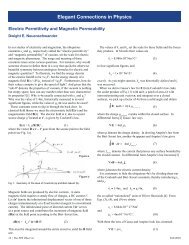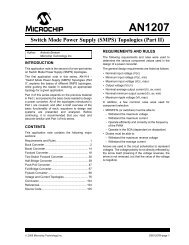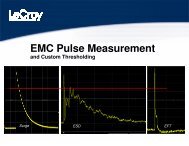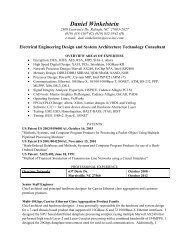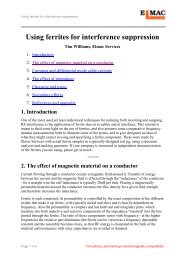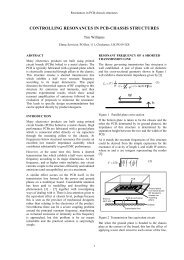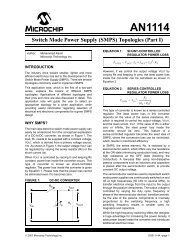Spice-Simulation Using LTspice Part 2 - IEC & Associates
Spice-Simulation Using LTspice Part 2 - IEC & Associates
Spice-Simulation Using LTspice Part 2 - IEC & Associates
- No tags were found...
Create successful ePaper yourself
Turn your PDF publications into a flip-book with our unique Google optimized e-Paper software.
For the exact description of these effects the reflection coefficient „r“ was introduced:Ur =UreflectedincidentZ=ZLoadLoad− Z+ ZNow the reflected wave can be calculated asU= r •reflectedU incidentThe voltage U Load at the load resistor is then:U = U + ULoadincidentreflectedNote:At every point in the cable Ohm’s law must be valid, because you have travelling energies. So you can calculatethe associated current at any point:IUincidentincident= andZIreflected =UreflectedExample:A pulse generator (Rs = 50Ω) generates in „no load condition“ a pulse amplitude of +20V with a pulse width of10ns. The pulse repetition frequency is 1kHz. The generator is connected to a RG58-coaxial cable (Z = 50Ω,length = 100m). The cable is terminated by a 75Ω-resistor. The dielectric constant of the cable is er = 2.25.Calculate and draw the signalsa) At cable’s input b) at cable’s centre c) at cable’s endZSolution:Zr =Z−Z75 − 50=+ Z 75 + 50Loada) Calculation of the reflection coefficient: = + 0.2Loadb) Cable velocity:vCable=cr=83 • 10 m= 2 • 102.25 • s8ms84



